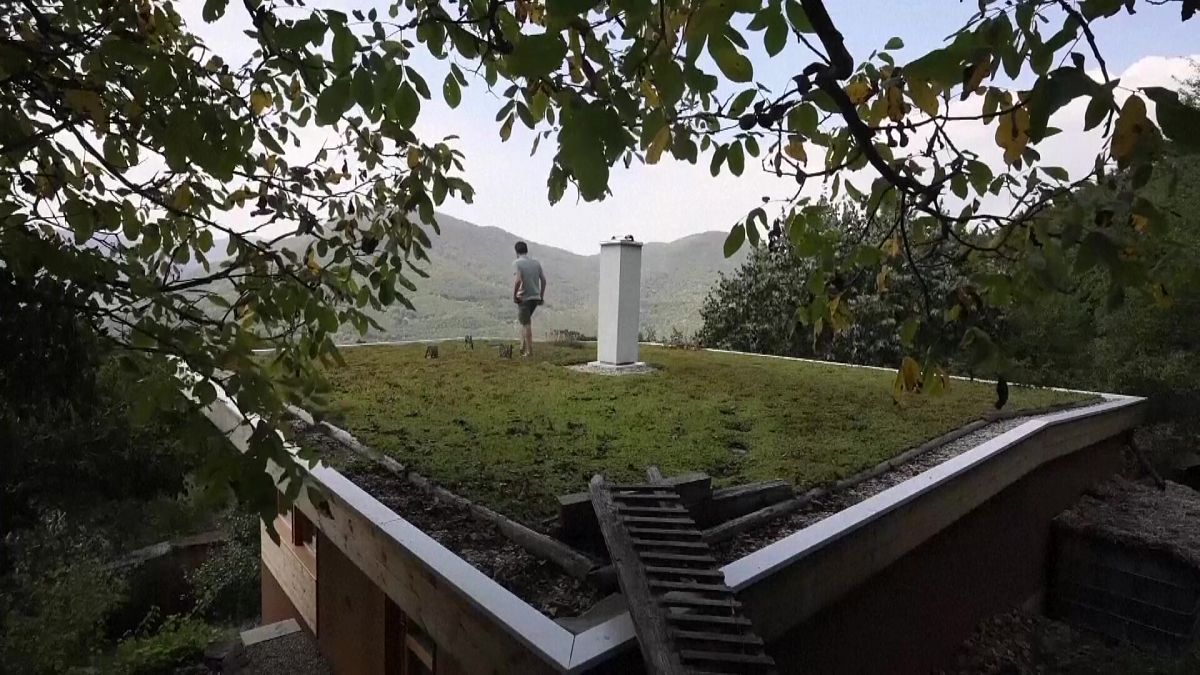In Bulgaria, some architects and companies are turning to eco-friendly building materials.
Architects in Bulgaria are turning to the wisdom of the past and blending it with modern techniques to build homes that offer refuge from scorching heatwaves.
According to the country’s National Institute of Meteorology and Hydrology, Bulgaria experienced its hottest and one of its driest seasons ever in 2024.
Local architects say ecological and local building materials like straw and clay allow for better ventilation and insulation.
Kamen Pramatarov is an architect who built and lives in a small house in the picturesque village of Zhelen, about 50 km from the capital of Sofia.
His house, built on a steep slope surrounded by three mountain ranges, is constructed using cob, a natural building material typically made from a mixture of clay, sand, straw, and water.
It also has a green roof that enhances its natural insulation.
“The green roof plays a role in the thermoregulation of the house, because the flat roof is extremely heated by the direct sun, and even if it has good thermal insulation, this leads to heating of the entire house,” Pramatarov said.
“Here, the vegetation perfectly copes with the overheating of the house, and in winter it is additional thermal insulation”.
Large windows and eaves (the edges of the roof) shield from the intense summer sun while allowing winter sunshine to enter.
Pramatarov says cob-made walls help maintain in-house humidity. He also built a wooden facade that has a hidden ventilation function to prevent heat and keep warmth in winter.
More embrace greener building practices
Other architects in Bulgaria like Pramatarov are turning to eco-friendly local materials to build homes.
At the Viverde Straw Modules factory near Sofia, eco-friendly building materials are produced.
At this facility, wheat straw is transformed into these building modules.
Co-owner Velin Nikolov says there are several advantages to living in a straw home.
“Upon entering a straw house, you immediately notice a comfortable temperature – cool in the summer and warm in the winter,” Nikolov said.
“Thanks to its excellent insulation, the house maintains a stable temperature, resisting fluctuations caused by the outside weather conditions,” he added.
Nikolov hopes the sector will grow, as more people embrace greener building practices.
“We seem to be seeing an awareness among people that one should value one’s health and strive for the comfort that comes from nature”.
The Institute for Environmental Construction (IEC), an NGO dedicated to promoting eco-friendly building techniques in the Balkan region, is constructing its headquarters on the site of a former school building in the village of Dolni Rakovets.
“The aim of this institute is to train specialists, people who work in construction, as well as people who can change their environment on their own in their daily lives and even inspire young people,” Borislav Slavchov from the IEC said.
“Ecological construction and ecological lifestyle, ecological philosophy, by transmitting the knowledge that comes from our roots, from our ancestors, in a modern new way,” Slavchov added.
For more on this story, watch the video in the media player above.
Video editor • Roselyne Min

